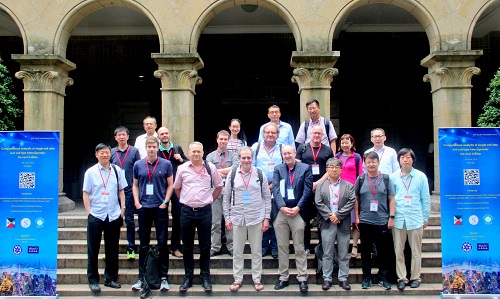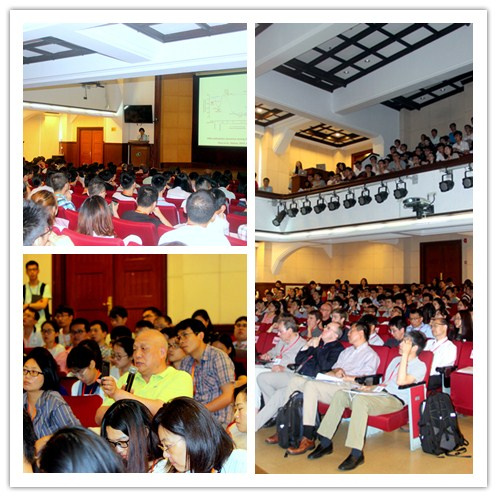Computational Analysis of Single Cell Data and Cell-type Heterogeneity Conference Held in Shanghai
The Computational Analysis of Single Cell Data and Cell-type Heterogeneity Conference was held in Shanghai during June 8th - 9th, 2018. This international symposium brought together world-renowned experts in the single-cell and cell-type heterogeneity fields, to discuss a broad range of topics, including Developmental Biology, Computational and Statistical Methodology, Systems Biology, Precision Medicine and latest Single-Cell Technology. Although focused on computational aspects, the breadth of topics covered was done to help foster inter-disciplinary and international collaborations.
Of the 24 speakers, 10 were speakers from Chinese institutions, including Chinese Academy of Sciences (CAS), Tsinghua University and Peking University, and 14 from research institutes in USA, UK, Germany, Belgium, Singapore and Korea, which included Harvard University, Johns Hopkins University, Stanford University, University of Cambridge, the Francis Crick Institute and University College London, University of Saarland and, A*Star SIgN, etc. More than 300 audience members attended the meeting.
The symposium was organized by CAS-MPG Partner Institute for Computational Biology (PICB), Shanghai Institute of Nutrition and Health, CAS, CAS Key Laboratory of Computational Biology and Shanghai Institute for Advanced Studies (SIAS), CAS as the 98th Interdisciplinary Forum of SIAS.
Cell-type heterogeneity presents one of the most significant challenges to the biological interpretation of omic data. Overcoming this challenge is critical for improving our understanding of developmental cell biology and of the molecular mechanisms that underlie complex diseases like diabetes and cancer, and ultimately for translating this improved understanding to tangible advances in personalized medicine and healthcare. The ongoing single-cell omic revolution has already transformed our fundamental understanding of developmental biology and disease, yet further progress largely depends not only on technological advances, but also increasingly on computational methods aimed at extracting the novel biological insight from such complex datasets.
The two-day symposium helped to outline some of the most significant immediate and future computational challenges faced by the single-cell and cell-type heterogeneity fields. It also helped attendants to think of innovative solutions for tackling them. In particular, the symposium will have inspired the younger generations of Chinese students and postdocs to tackle the big computational challenges in the field.
The event was sponsored by CAS, SIAS and Biostar.
PICB, the key organizer of the symposium, was co-established by CAS and MPG in 2005. PICB is dedicated to current topics in the biosciences with a particular focus on computational biology, with an overarching research goal to understand and interpret the principle of life using mathematic language. Currently there are about 200 members in PICB, including faculty, staff, graduate students and postdoctoral fellows.
|
|
| Group Photo of Speakers and Invited Guests |
|
|
| Conference Photos |


